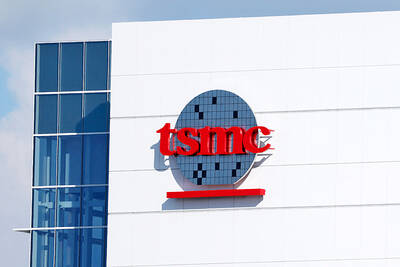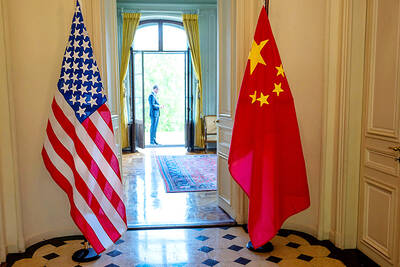So Morgan Stanley Capital International (MSCI) has decided to revise the Limited Investability Factor (LIF) currently applied to its Taiwan Index. Economists and fund managers operating in Taiwan can barely contain their enthusiasm and wax eloquent on capital inflows and index-tracking funds. Estimates of the dollar-value in investments the change will garner Taiwan's stocks range from a conservative US$2 billion to a hefty US$70 billion.
That much has been established.
But the question remains: Why is this somewhat abstruse technical revision considered an important success for Taiwanese businesses and policymakers?
In terms of international finance, MSCI's decision to grant full weighting to Taiwan's stocks is considered a profound change in the status of Taiwan's markets, because it means that the company no longer views Taiwan's stocks as over-valued.
This is essentially an endorsement of recent reforms to Taiwan's financial regulation system, particularly in regard to restrictions on overseas investment.
In MSCI's press release announcing the revision, the benchmark provider said "significant developments have taken place to relax foreign investment restrictions in Taiwan over the past few years."
One of the developments that MSCI was referring to was the government's decision to scrap the qualified foreign institutional investor (QFII) program on Oct. 1 last year. This program limited to US$3 billion the total amount foreign institutions could invest in Taiwan. The QFII program, implemented in 1991, was widely credited with helping the nation to avoid some of the painful convolutions of the region's stock markets during the 1997 Asian financial crisis, but it was also considered a major barrier to overseas investment.
Repealing the QFII program was one of the promises made by President Chen Shui-bian (陳水扁) as part of his administration'sefforts to deregulate the nation's financial markets.
As the QFII program ended eight months ago, last Saturday's announcement by MSCI was hardly unexpected.
This was reflected in the relatively lukewarm response among investors -- particularly foreign investors -- on Monday, June 21, the first day of trading after the announcement was made. The TAIEX finished the day's trading down 0.23 percent to close at 5,556.54 points. But traders rallied later in the week, and the nation's benchmark ended the week's trading up 4.2 percent week-on-week, at 5,802.55 points.
Aside from the short-term impact on the nation's bourses, most analysts predict that the revision will have a beneficial medium and long-term impact. Little wonder, as about US$3 trillion is benchmarked to MSCI's indexes worldwide, according to the firm's estimates.
Merrill Lynch estimates that approximately 13 percent of this -- US$400 billion -- is from passive index-tracking funds. The company believes that US$4 billion from such funds will flow into Taiwan commensurate with the removal of the LIF.
Active funds will contribute a greater sum to the TAIEX. The total adjusted market capitalization of the TAIEX is approximately US$352 billion, according to figures provided by the Taiwan Futures Exchange. Merrill Lynch expects "US$31 billion from active/semi-active funds," around 8 percent of the benchmark's capitalization, will flow into Taiwan.
The LIF removal will be a two-stage process, with the first revision occurring on Nov. 30, when MSCI will change the weighting of its Taiwan Index from 55 percent to 75 percent. The final revision will be on May 31 next year, when the weighting of the Taiwan Index will be removed and the benchmark will fully reflect the listed prices of Taiwan's securities.
The MSCI Taiwan Index is compiled by including 85 percent of the market capitalization -- or total dollar value of a company's outstanding shares -- of each industry in the Global Industry Classification Standard.
According to MSCI's Web site, this method of compiling a country index means that the "economic diversity of the market is reflected" in the index.
One would assume that if this were the case, removing the weighting from the Taiwan Index would result in gains for Taiwan's shares, and indeed, Goldman Sachs Group Inc projects that the change will push the TAIEX up 30 percent -- well over the 7,000 point mark -- by next May.
However, Merrill Lynch singled out 15 companies that it predicted would benefit the most from MSCI's move. Among tech stocks, the company believes Taiwan Semiconductor Manufacturing Co (
In the financial services industry, Cathay Financial Holding Corp (
One of the most publicized aspects of MSCI's revision is the fact that Taiwan will become the country with the largest representation in two of MSCI's regional equity indexes: the MSCI Emerging Markets Index and the MSCI All-Country Far East ex-Japan Index. The nation currently ranks third in terms of representation on both of these indexes; behind South Korea and South Africa on the Emerging Markets Index, and behind South Korea and Hong Kong on the Far East Index.
But on May 31, 2005, Taiwan will officially become No. 1, albeit in a rather obscure manner.

Real estate agent and property developer JSL Construction & Development Co (愛山林) led the average compensation rankings among companies listed on the Taiwan Stock Exchange (TWSE) last year, while contract chipmaker Taiwan Semiconductor Manufacturing Co (TSMC, 台積電) finished 14th. JSL Construction paid its employees total average compensation of NT$4.78 million (US$159,701), down 13.5 percent from a year earlier, but still ahead of the most profitable listed tech giants, including TSMC, TWSE data showed. Last year, the average compensation (which includes salary, overtime, bonuses and allowances) paid by TSMC rose 21.6 percent to reach about NT$3.33 million, lifting its ranking by 10 notches

Popular vape brands such as Geek Bar might get more expensive in the US — if you can find them at all. Shipments of vapes from China to the US ground to a near halt last month from a year ago, official data showed, hit by US President Donald Trump’s tariffs and a crackdown on unauthorized e-cigarettes in the world’s biggest market for smoking alternatives. That includes Geek Bar, a brand of flavored vapes that is not authorized to sell in the US, but which had been widely available due to porous import controls. One retailer, who asked not to be named, because

SEASONAL WEAKNESS: The combined revenue of the top 10 foundries fell 5.4%, but rush orders and China’s subsidies partially offset slowing demand Taiwan Semiconductor Manufacturing Co (TSMC, 台積電) further solidified its dominance in the global wafer foundry business in the first quarter of this year, remaining far ahead of its closest rival, Samsung Electronics Co, TrendForce Corp (集邦科技) said yesterday. TSMC posted US$25.52 billion in sales in the January-to-March period, down 5 percent from the previous quarter, but its market share rose from 67.1 percent the previous quarter to 67.6 percent, TrendForce said in a report. While smartphone-related wafer shipments declined in the first quarter due to seasonal factors, solid demand for artificial intelligence (AI) and high-performance computing (HPC) devices and urgent TV-related orders

MINERAL DIPLOMACY: The Chinese commerce ministry said it approved applications for the export of rare earths in a move that could help ease US-China trade tensions Chinese Vice Premier He Lifeng (何立峰) is today to meet a US delegation for talks in the UK, Beijing announced on Saturday amid a fragile truce in the trade dispute between the two powers. He is to visit the UK from yesterday to Friday at the invitation of the British government, the Chinese Ministry of Foreign Affairs said in a statement. He and US representatives are to cochair the first meeting of the US-China economic and trade consultation mechanism, it said. US President Donald Trump on Friday announced that a new round of trade talks with China would start in London beginning today,